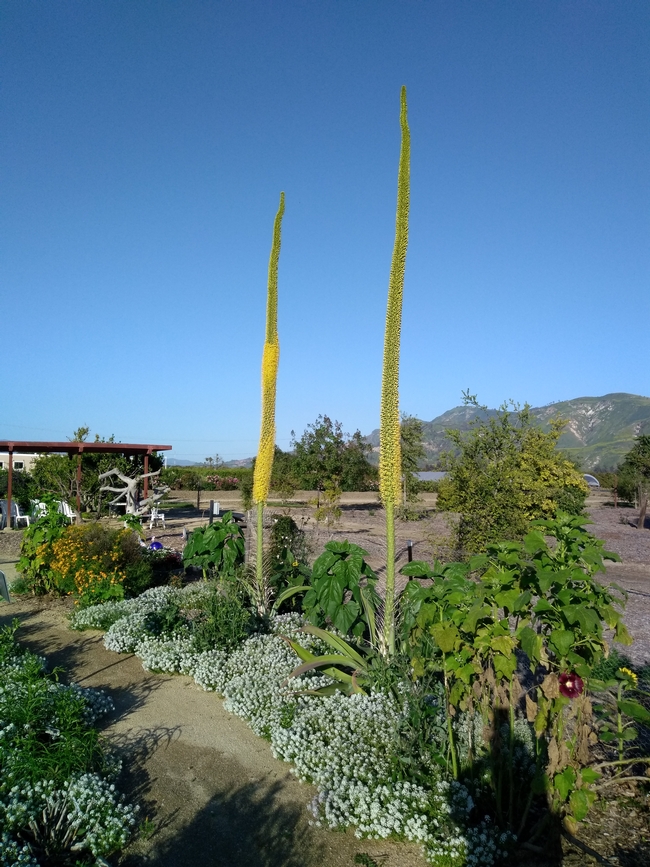In this weekly blog, Dr. Annemiek Schilder, Director, UCCE Ventura County and Hansen Agricultural Research and Extension Center, shares her observations about the natural world across the seasons. As she says:
"Gently observing your surroundings with curiosity will teach you some amazing things. There are so many fascinating things happening under our noses, only wanting for an observant eye."
The flowering spikes of the octopus agave (Agave vilmoriniana), currently in bloom in the Master Gardener Demonstration Garden at HAREC in Santa Paula, are seriously impressive at more than 12 feet tall. Octopus agave is a drought-tolerant plant native to the Mexican desert where it grows on rocky ground. The gray-green smooth, twisting leaves with flexible spikes at the tips give the plant an octopus-like appearance. Like other agaves, it is monocarpic, flowering only once in its life before it dies.
Agaves belong to the family Asparagaceae and are therefore related to asparagus. Indeed, young flower spikes may resemble giant asparagus spears. Flowering usually occurs between 6 and 25 years of age. The plant invests all of its energy into producing a spectacular flower display as its last hurrah. The copious small yellow flowers start opening at the bottom of the spike, moving upwards in waves. Flowering may occur over a period of 4 to 8 weeks.
Agave flowers are a magnet for pollinating insects and hummingbirds. However, in their native habitat, nectar-feeding bats, such as the lesser long-nosed bat and the Mexican long-tongued bat, play an important role in agave flower pollination. This may also explain the height of the flower spikes. Bats pollinate at night and are critical for seedset. In the absence of these specialized bats, fewer than 5% of the flowers may produce seed. Commercial cultivation of agave for tequila, which involves cutting off flower stalks, as well as pesticides and habitat destruction have been put forward as reasons for the current endangered status of some of these bat species in Mexico.
In addition to seeds, plantlets called “bulbils” may be produced in large numbers on spent flower stalks. These bulbils are exact clones of the mother plant and will root readily when planted in soil. While clonal reproduction is a good short-term strategy for plant survival, it does limit genetic diversity which makes the species less adaptable to environmental changes in the long term.
